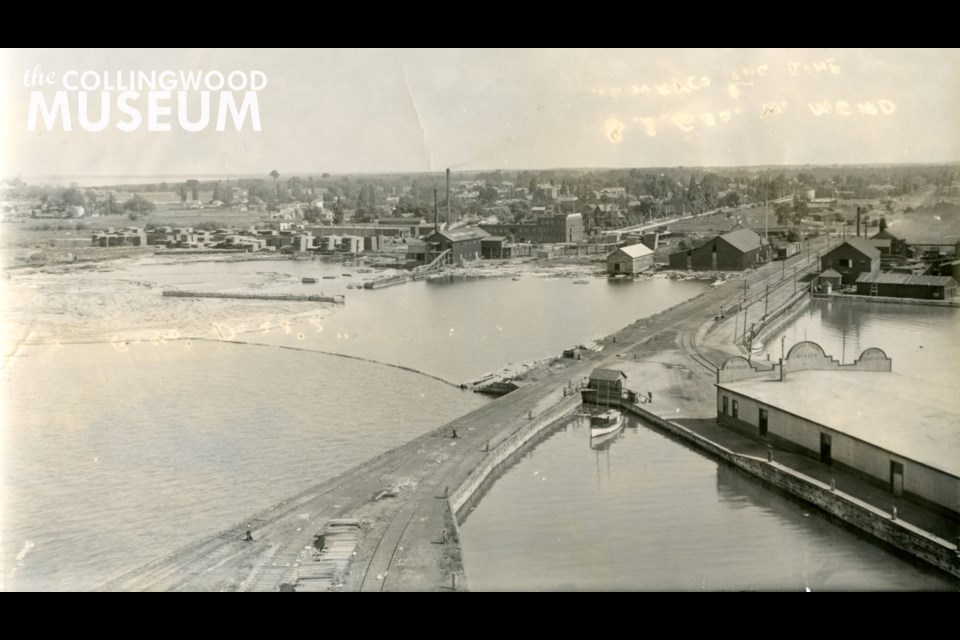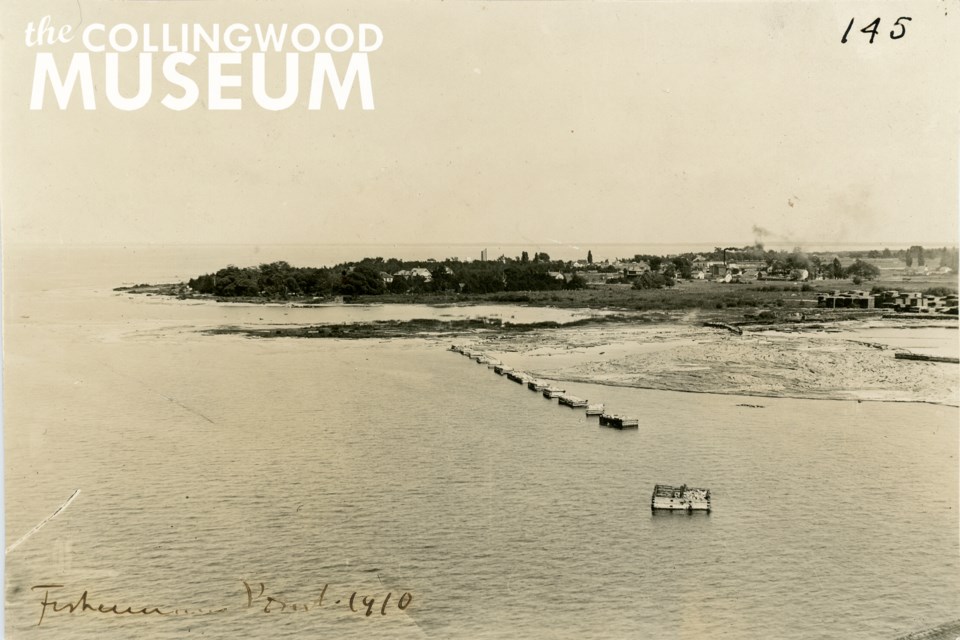This week’s Remember This photograph was captured in 1910 and looks to have been taken from an elevation along the present-day location of Heritage Drive in Collingwood, looking easterly towards today’s Sunset Point.
In Collingwood’s earliest years, this portion of land was called Fisherman’s Point. The earliest reference appears on William Gibbard’s 1856 Chart of Collingwood Harbor and its Connections that is held in the museum’s archival collection.
Many early harbourfront photographs were taken from Collingwood’s grain terminals, so it’s possible this is where our unidentified photographer was positioned to capture Collingwood’s most north-easterly land mass.
Oddly, none of the buildings in today’s photograph are included in the 1904-1917 Chas. E. Goad Co. fire insurance maps for the Town of Collingwood.
At least five homes along Niagara Street are visible within the densely treed land mass; however, the identities of the remaining buildings are largely unknown.
The Bryan Manufacturing Planing Mill and the D.G. Cooper Saw Mill are the closest properties to be identified on the early insurance map, being located on the north side of Huron Street at Minnesota Street.
Signs of these businesses are visible in the water and on the shore. An incredible number of logs are visible in the water between what are believed to be crib docks and the shoreline. Likewise, large stacks of lumber are visible on the shore at the photograph’s right side.
Today’s second photograph was taken from a similar location, but captures a south-easterly view of Collingwood, including Bryan Manufacturing and the sawmill. The piles of lumber and logs in the water are more noticeable from this vantage point.
The date of this second photograph is unknown; however, it predates the devastating fire that destroyed the Byran Manufacturing Company in April 1915.
If you have any information about the buildings in this photograph, please contact Collingwood Museum staff at mshaw@collingwood.ca.
Remember This is a weekly series of historic photographs submitted by the Collingwood Museum to our sister site, CollingwoodToday.ca. These photographs were originally collected and documented by the Huron Institute in an historical catalogue entitled Huron Institute Paper and Records: Volume III. Much of Collingwood’s early history has been preserved due to the dedication and foresight of the early museum’s founders, namely its secretary-curator David Williams, upon its establishment in 1904.

